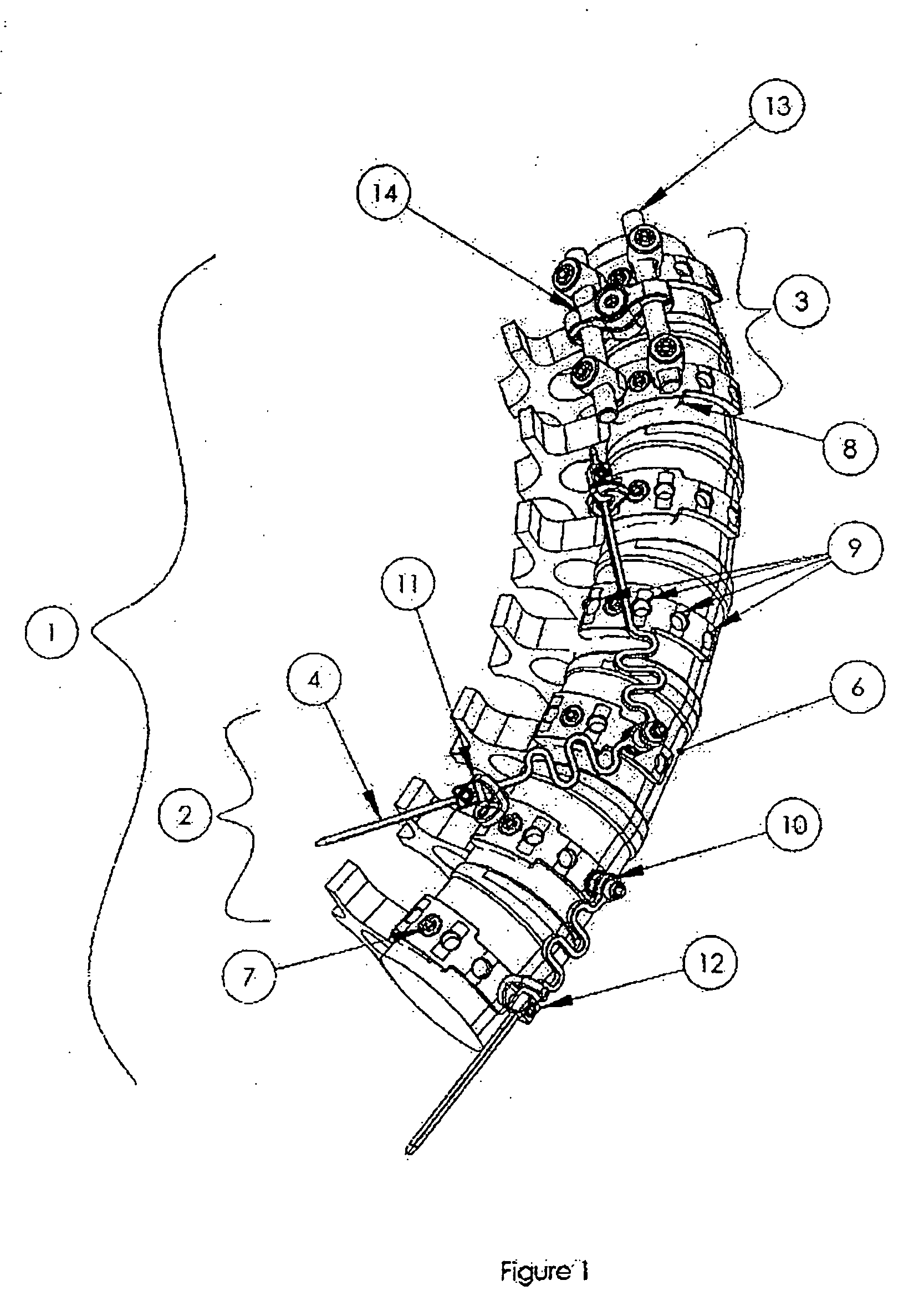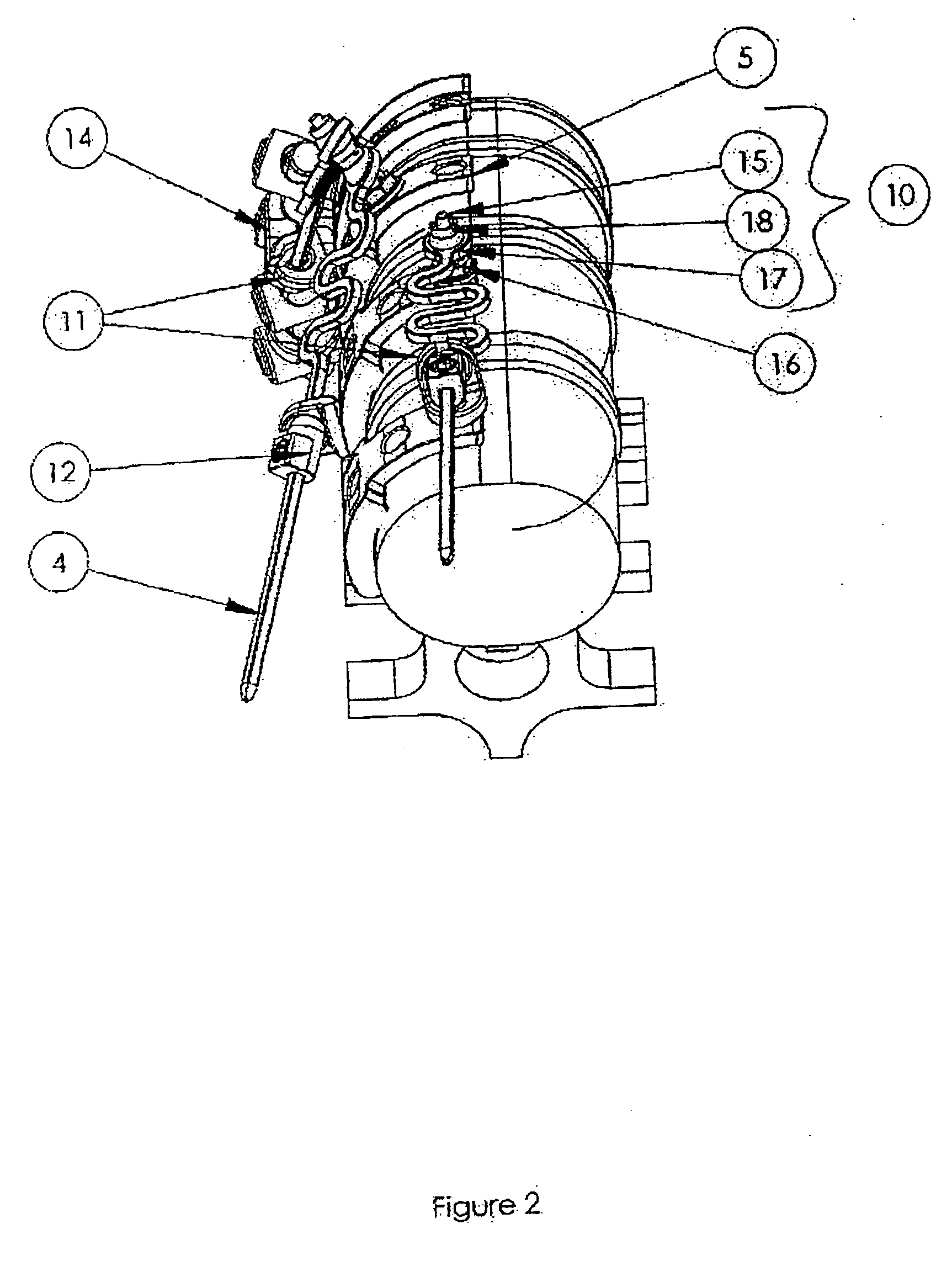Orthopaedics device and system
- Summary
- Abstract
- Description
- Claims
- Application Information
AI Technical Summary
Benefits of technology
Problems solved by technology
Method used
Image
Examples
Embodiment Construction
[0037]FIG. 1 shows a hybrid device, 1, with a plurality of flexible implants, 2, below and a fusion device, 3, above. Each flexible implant, 2 (also referred to as a ‘non-fusion device’ or ‘spring device’) comprises a spring, 4, made of memory metal with the typical properties of a memory metal. Plates, 5, with multiple attachments, 9, are applied to each vertebra, 6, of the curve (occasionally it might not be necessary to attach a plate to every vertebra). A plate, 5, is attached to a vertebra, 6, with screws, 7, placed through the plate, 5. The plate, 5 has small projections, 8, on the surface adjacent to the bone which stop the plate slipping. There are multiple attachment points, 9, on the plate, 5, which allow the spring, 4, to apply its force at variable angles. This allows either longitudinal compression across the motion segment or it allows oblique forces to be applied across a motion segment. The spring, 4, is attached to the plate, 5, by a universal joint, 10, at one end,...
PUM
 Login to View More
Login to View More Abstract
Description
Claims
Application Information
 Login to View More
Login to View More - R&D
- Intellectual Property
- Life Sciences
- Materials
- Tech Scout
- Unparalleled Data Quality
- Higher Quality Content
- 60% Fewer Hallucinations
Browse by: Latest US Patents, China's latest patents, Technical Efficacy Thesaurus, Application Domain, Technology Topic, Popular Technical Reports.
© 2025 PatSnap. All rights reserved.Legal|Privacy policy|Modern Slavery Act Transparency Statement|Sitemap|About US| Contact US: help@patsnap.com



